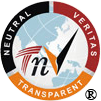All Categories

I believe the auditing will be easier in new standard. The checking the availability of mandatory procedures, records and checking the narration of the standard requirements in the Manual was an essential part of auditing. This will be reduced to a great extent. So auditors will have more time to look at the Scope, Policy and Objectives and their application, etc.
Another convenience will be to check the commitment of senior management, including heads of functions and Process owners beyond policy formulation and participation in Management review meetings.
The rigours of auditing validation, calibration, NC product and competency will remain the same, although standard language has forced the texts to be reduced significantly.
The auditing of support functions will be more interesting, as their requirements and interactions have been placed very effectively.
New checklists will be made. New training will be designed, and risk-based auditing and remote auditing will provide more flexibility to auditing.
Checking the records at the Conference room with MR in attendance, may be replaced with scanning the records from computer screen and verifying the compliance from real-time data.
It will be interesting to attach the scanned record and photographs as objective evidence, instead of noting down or attaching copies to audit report.
This may result in less auditing time, as report writing will be faster and structured with computer network. It will be fun to have opening and closing meeting with participants from different location through video-conferencing.
It will be certainly a big challenge to the auditors, who are still using pen-paper and sifting papers to obtain audit evidence. Auditors with inadequate communication and computing skills will also face challenge, as many communications will be on real-time basis, like uploading the files and reports after the audit.
By: Subhas C Biswas
ÂÂ







